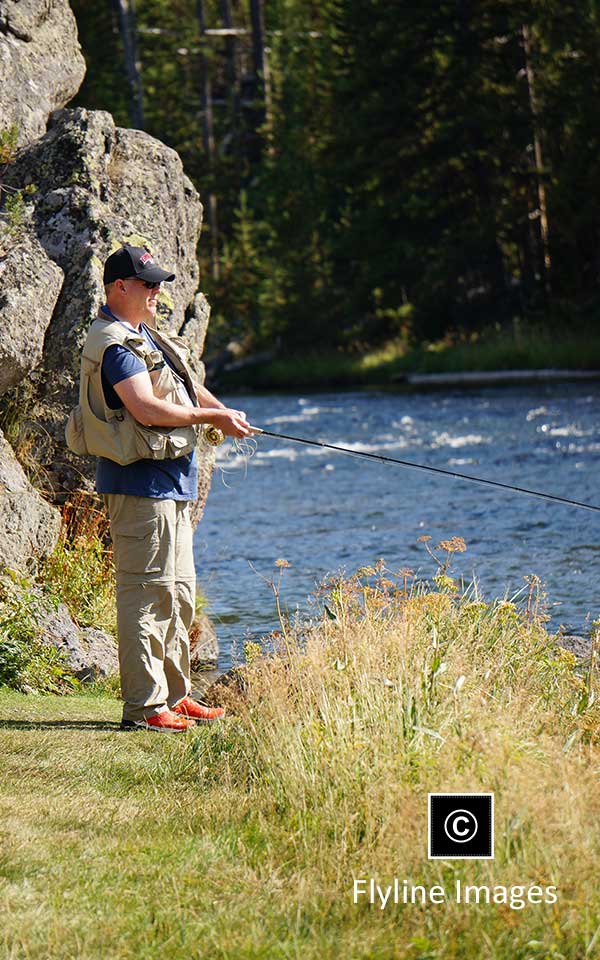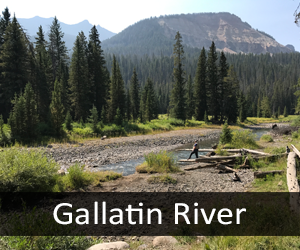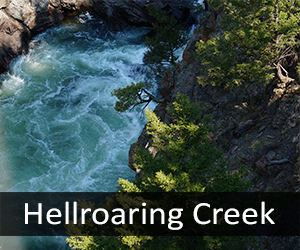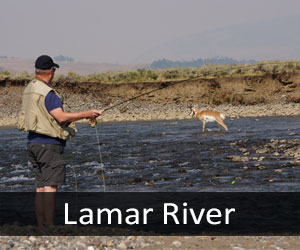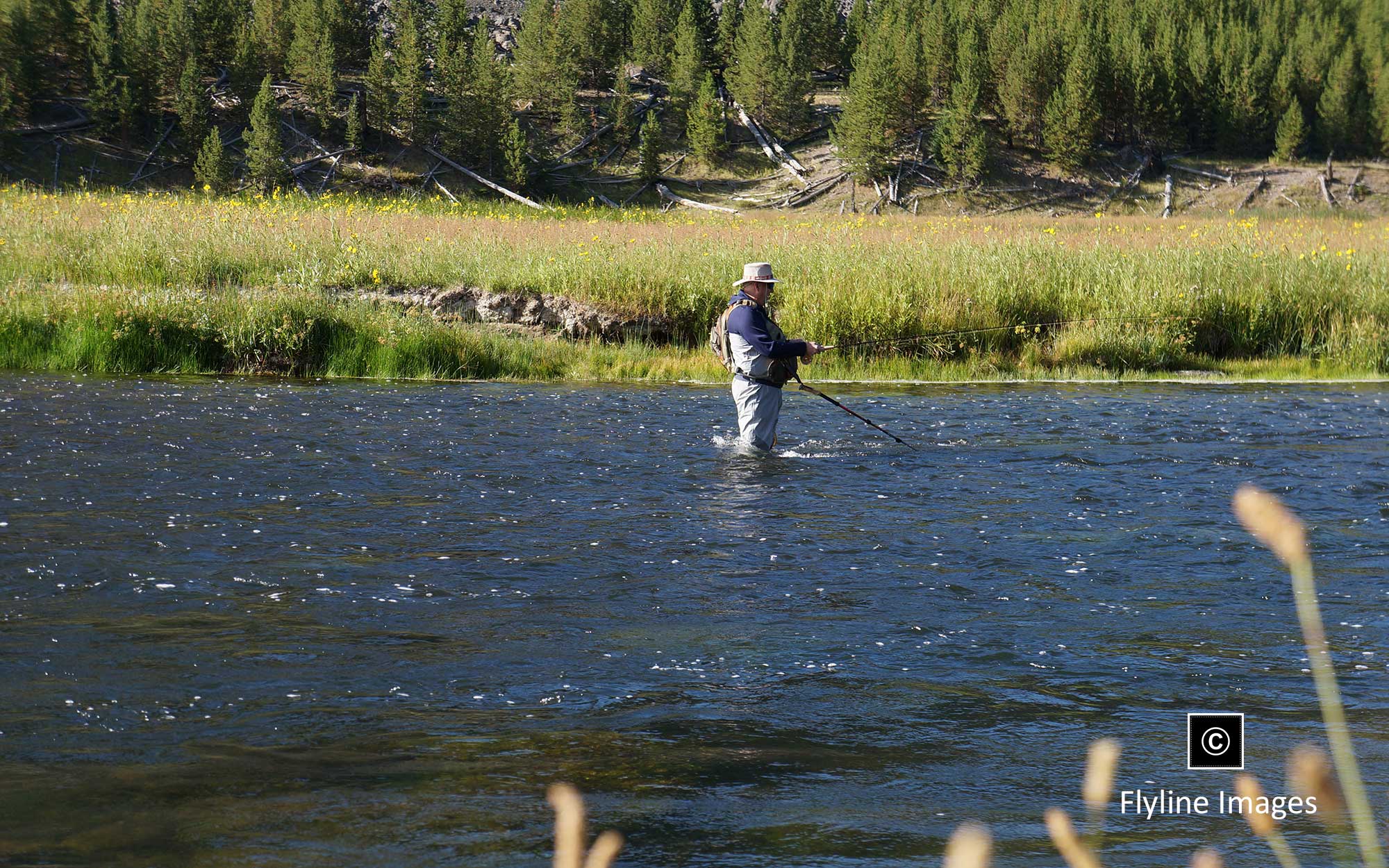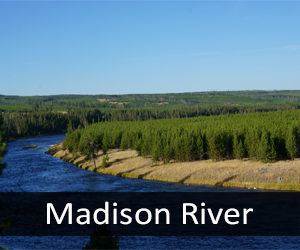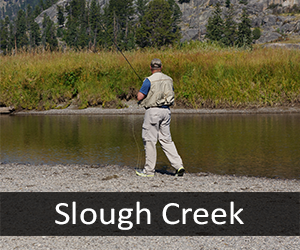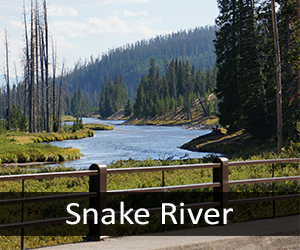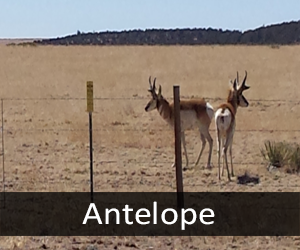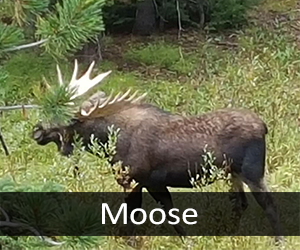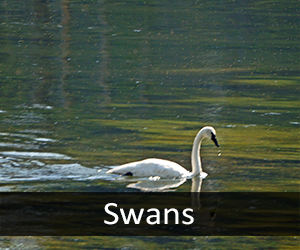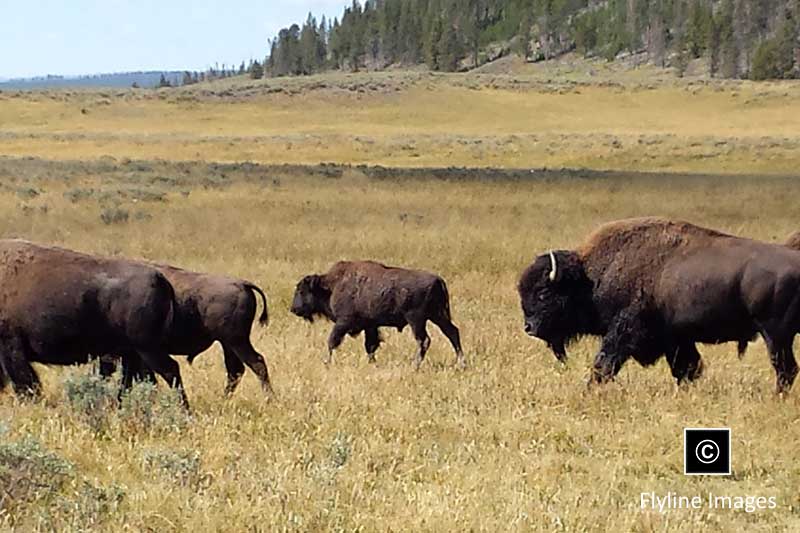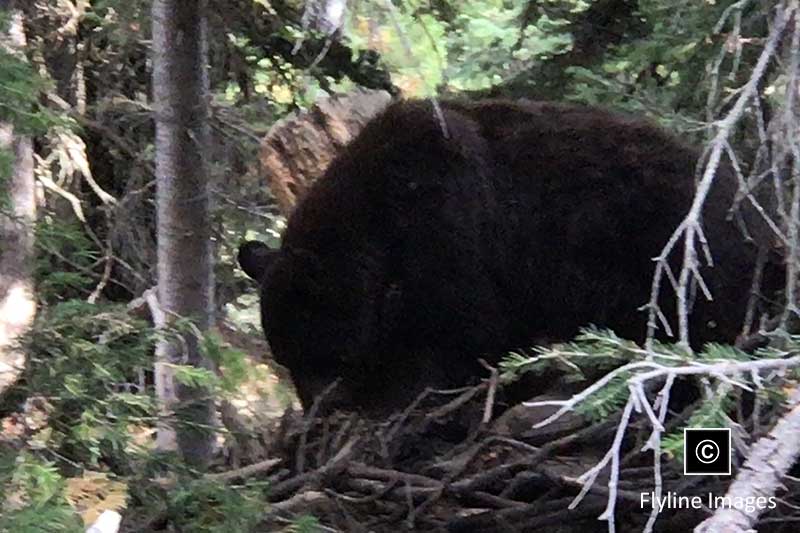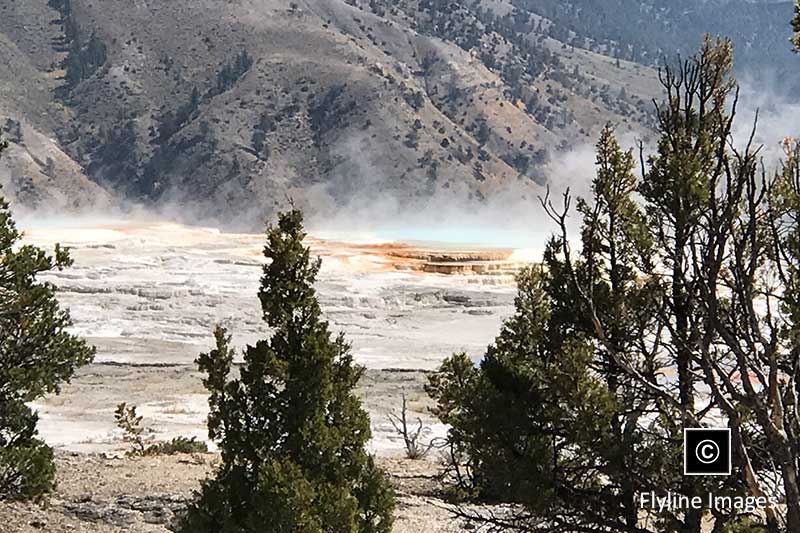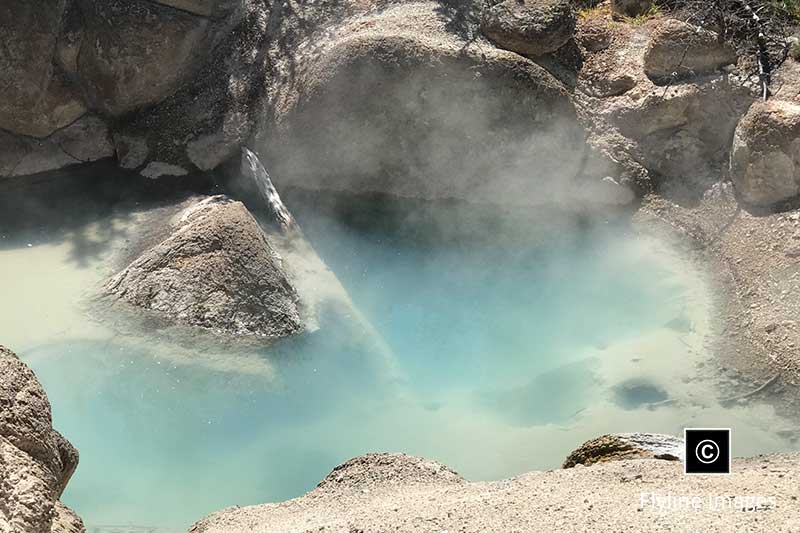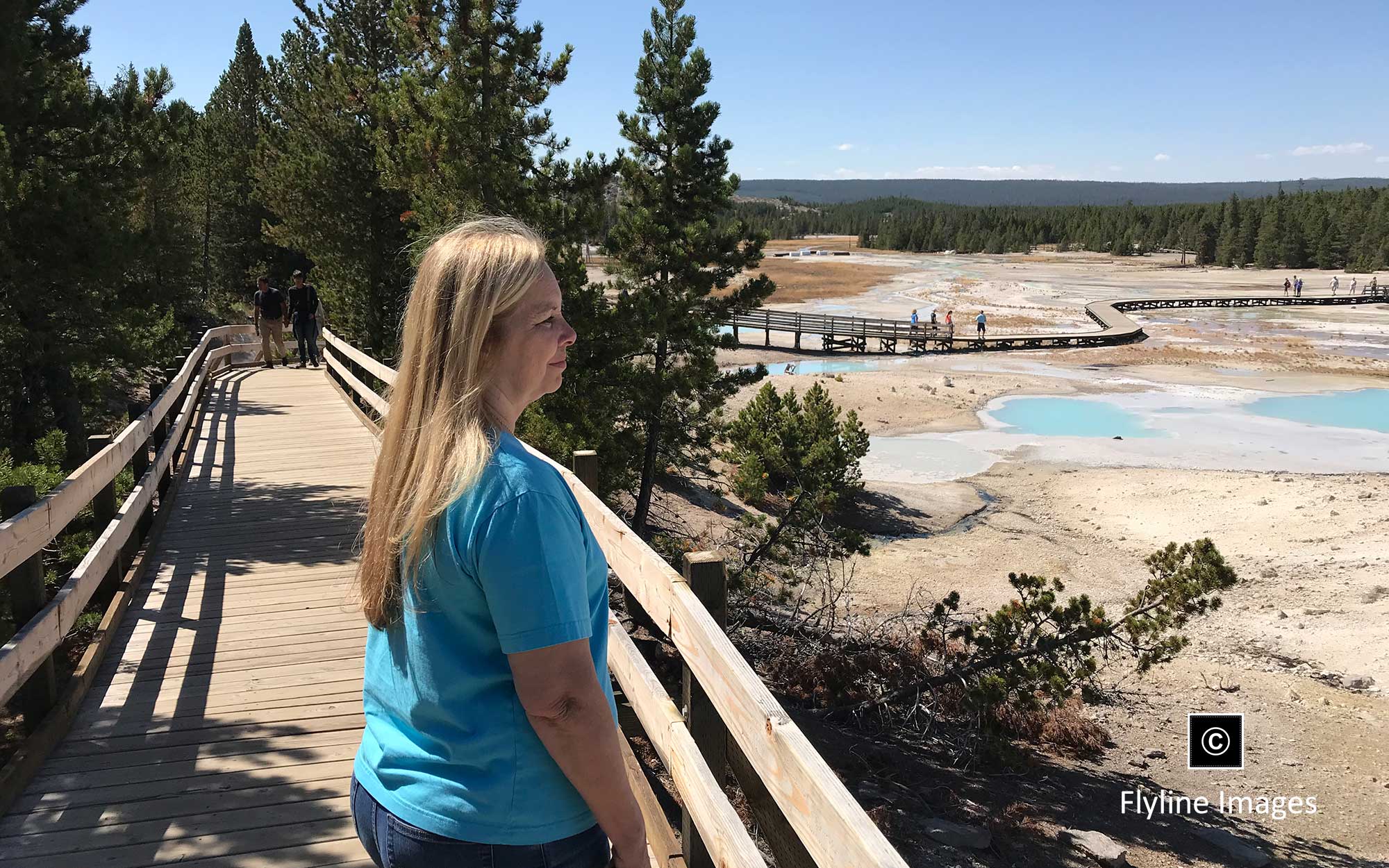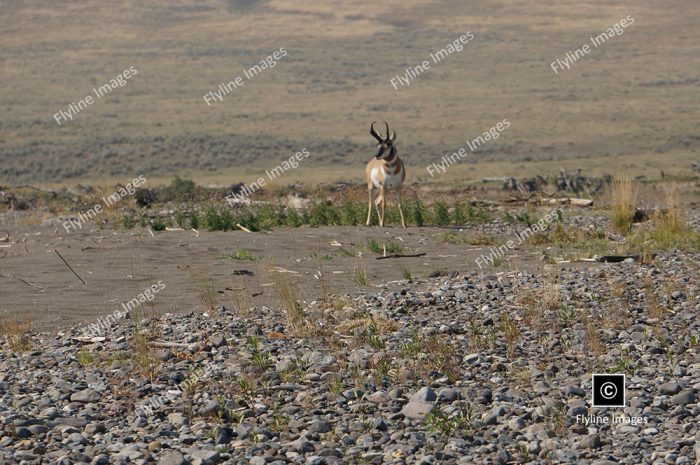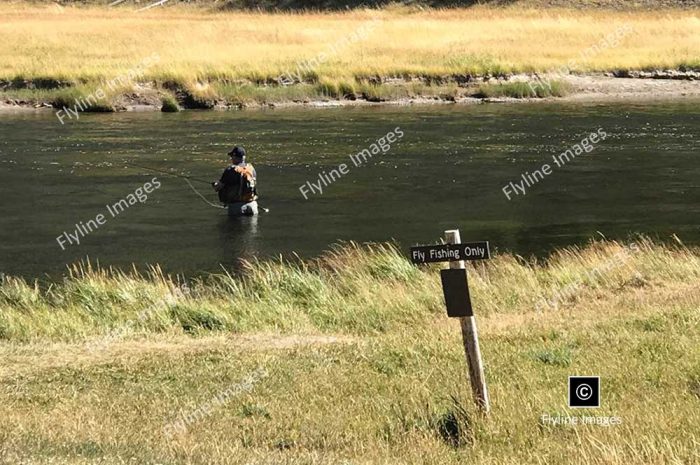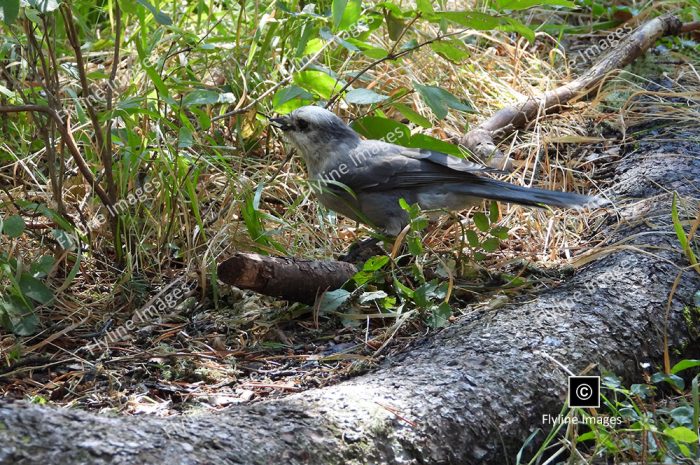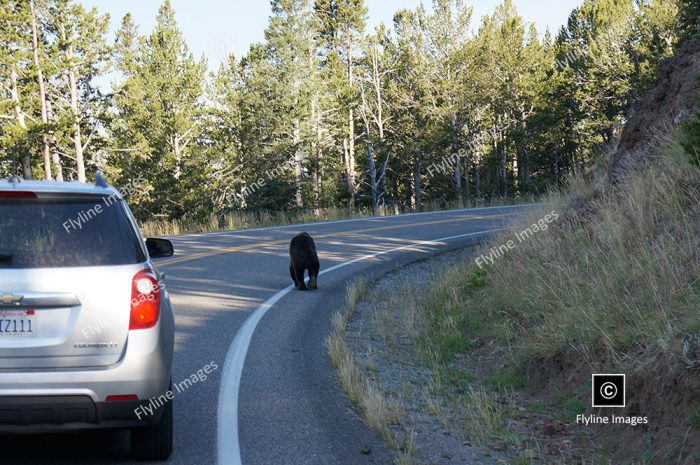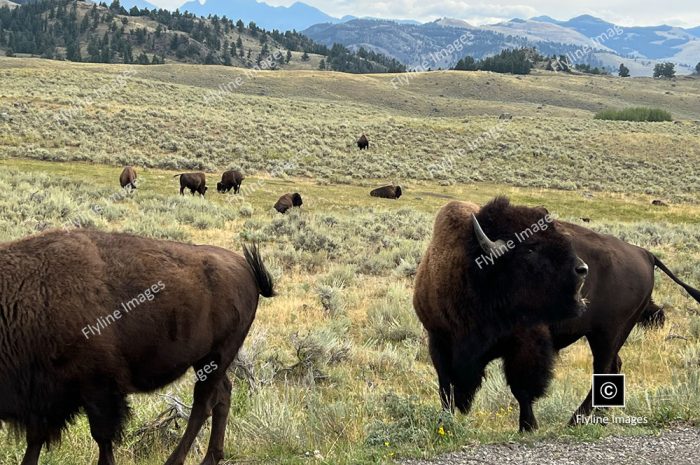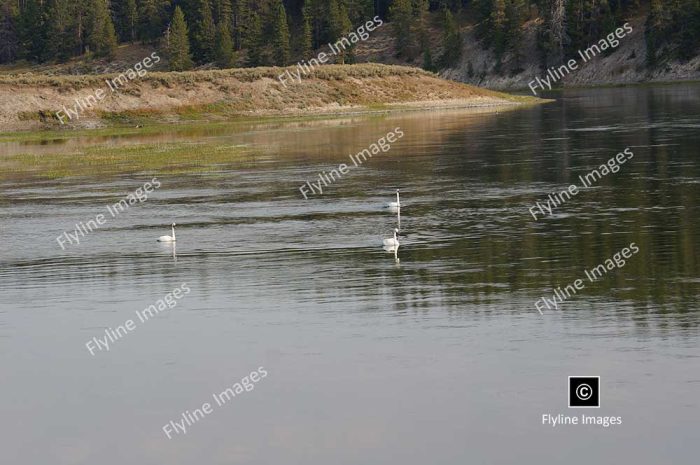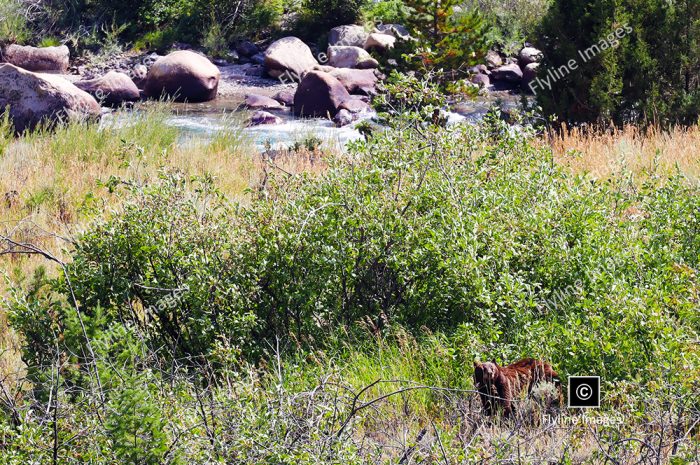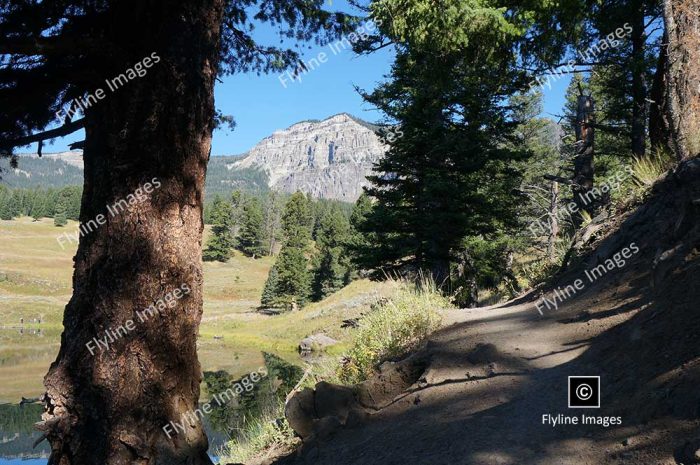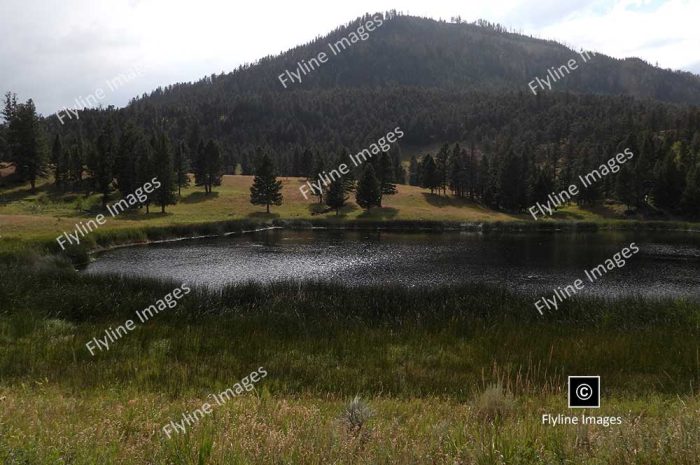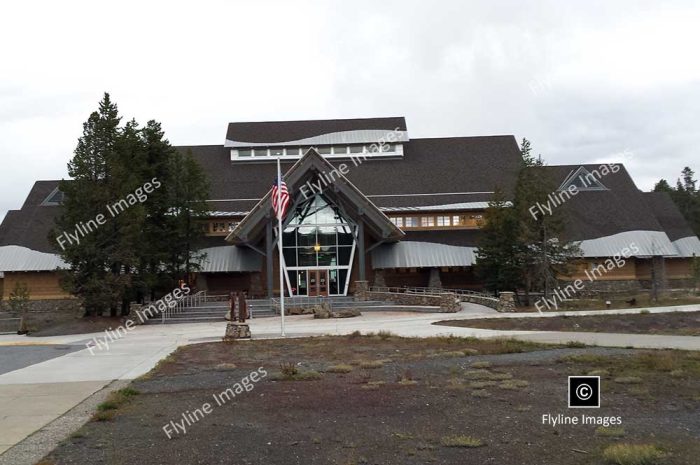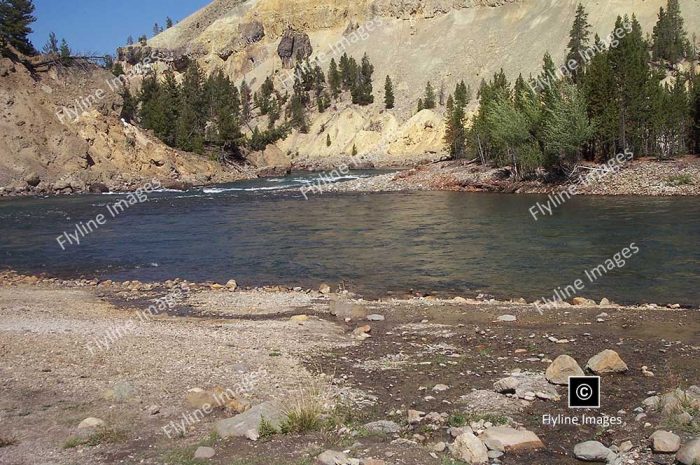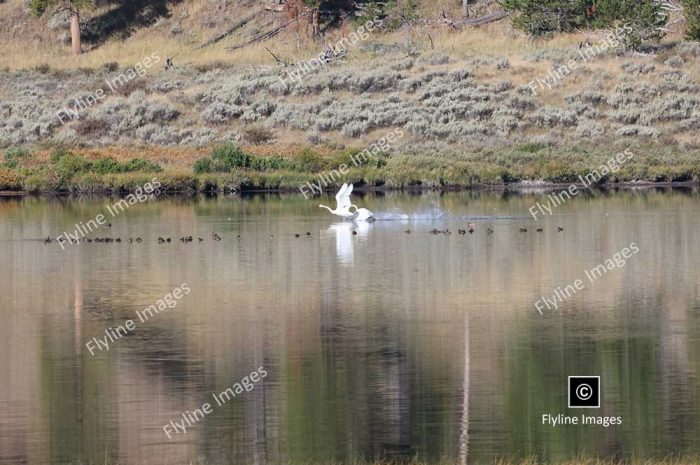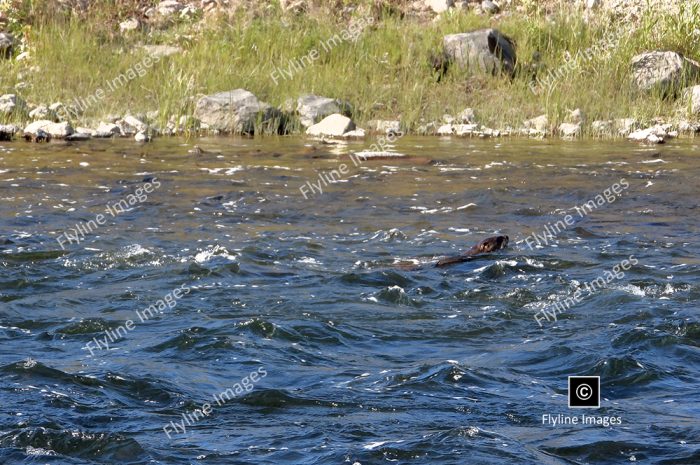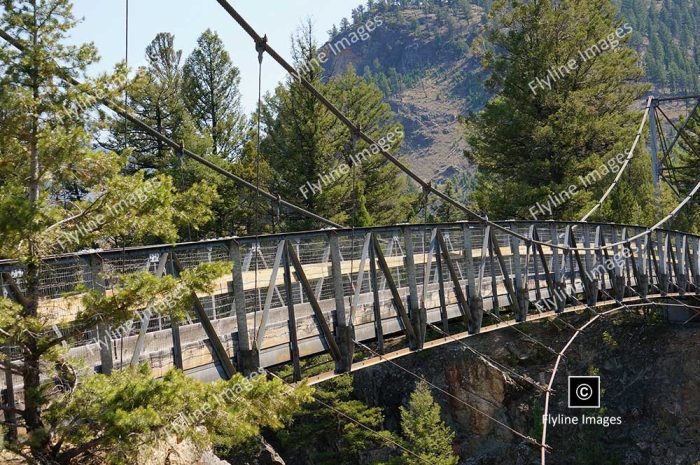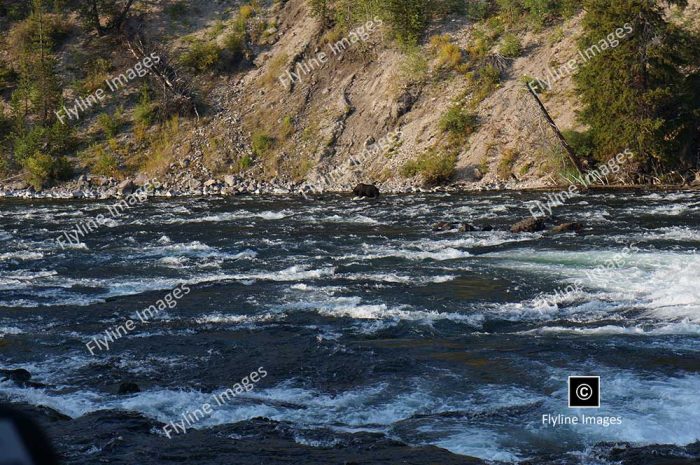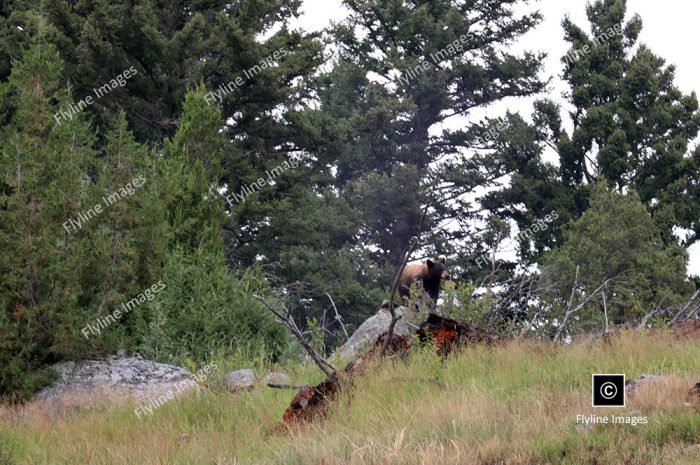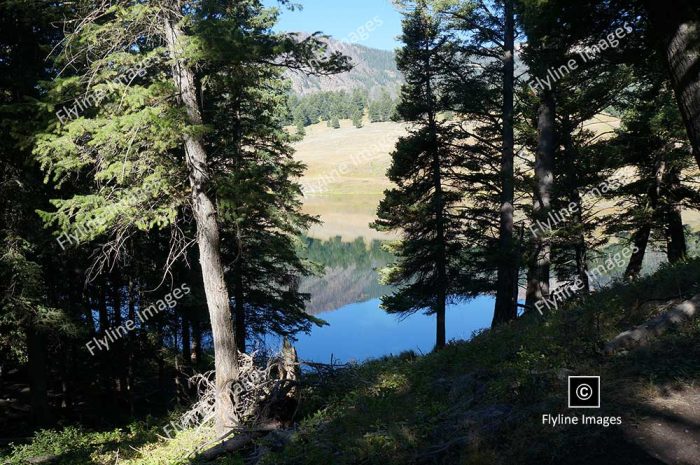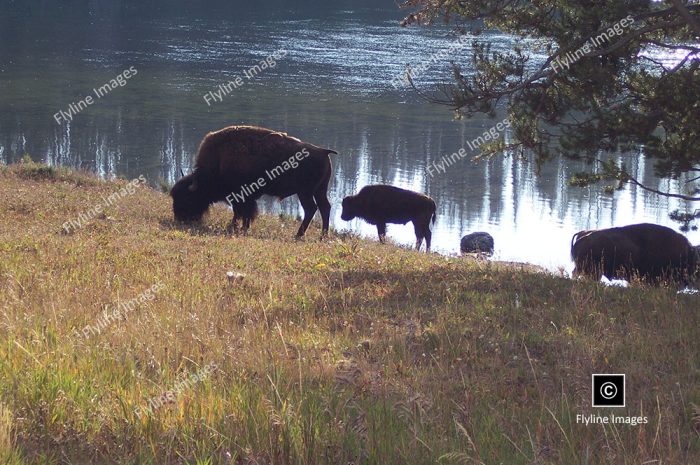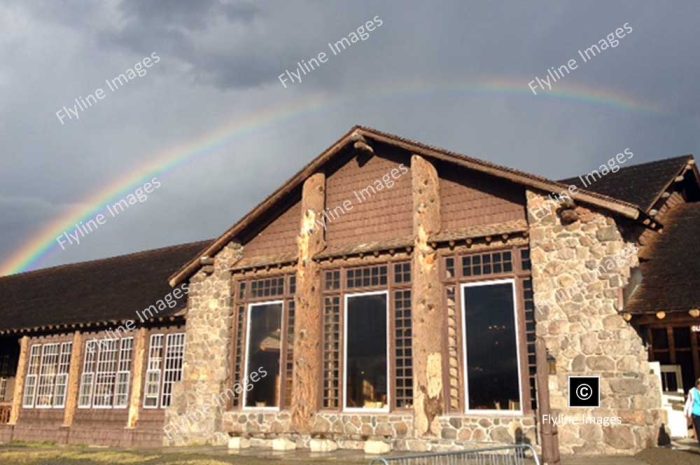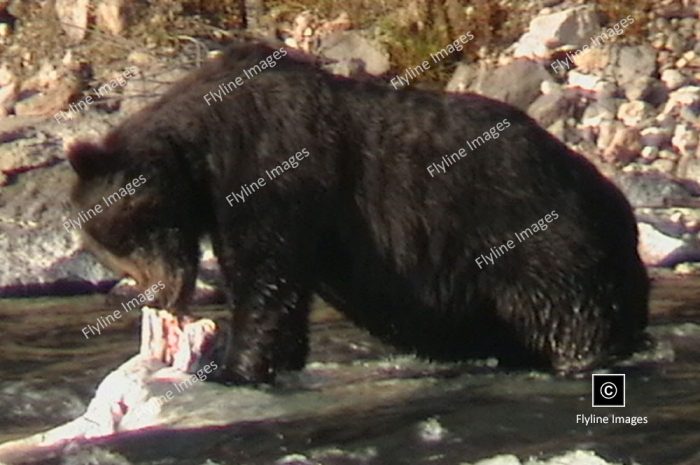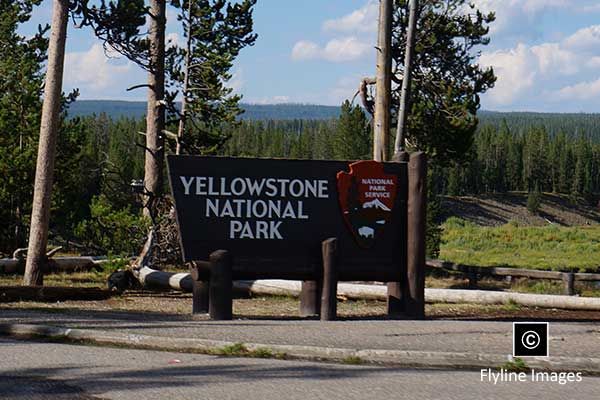 America’s First National Park
America’s First National Park
Geysers, Rivers, Mountains, Fishing, Hiking
Yellowstone is the very first national park ever established in the United States. The park is actually larger than some states in America. The park is so big that parts of it lie in three different states, Montana, Wyoming and Idaho. The majority of the Yellowstone park lands are located in the northwestern corner of Wyoming.
We are really proud of our Yellowstone photo collection. People who visit our website always compliment us on this section of our site. We invite you to take all the time you want on the site to view and enjoy all the gorgeous images. When we created the Yellowstone collection, our goal was to ensure that we treated our site visitors to virtual tour of the park. To accomplish that, our content team visits the park each year. They gather images of rivers, mountains, geysers and the incredible wildlife.
The fee to enter Yellowstone is minimal. Our team was just there in 2018 and paid $35 for a week long pass. The park does offer an annual pass and that fee was $70 dollars, at the time of our visit in September. Prices for commercial tour services depend upon the seating capacity of the vehicles entering the park.
Yellowstone Rivers
Our Yellowstone river collection is awesome. We have taken beautiful photos the majority of the major waterways in the park. The sites includes lots of gorgeous images of the Garner River, Lamar River, Madison River, Firehole River, Slough Creek, Soda Butte Creek, Gibbon River and the absolutely breathtaking Yellowstone River. All of these rivers offer opportunities for fly fishing. Most hold rainbow and brown trout. Some of these rivers have populations of native cutthroat trout, whitefish and grayling.
The Firehole river is one of the most scenic waterways in the park. This beautiful stream flows through the Upper Geyser Basin area, which includes the famous Old Faithful Geyser. The Firehole River, with its mesmerizing course, carries not just water but an aura of mystery and timeless beauty. Flowing through the heart of Yellowstone’s geothermal wonders, it acts as a natural pathway showcasing some of the park’s most iconic geysers, including the awe-inspiring Old Faithful. This river’s unique thermal features, combined with its lush surroundings, create a captivating landscape that enchants visitors year-round, making it a must-visit destination for nature lovers and adventurous souls alike.
The Firehole River is not just a spectacular sight but also a vital ecosystem for the park’s diverse flora and fauna. The river supports a variety of fish species, including cutthroat trout, rainbow trout, brown trout, and brook trout, making it a haven for anglers. Its waters are also home to a range of aquatic plants and invertebrates, providing a vital food source for the resident wildlife.
Along its 21-mile journey, the river showcases different characteristics, from calm and serene stretches to powerful rapids. The Firehole Canyon, located in the southern part of the park, is one of the most scenic sections of the river. The canyon walls rise up to 800 feet above the water, creating a dramatic backdrop while you explore the river’s winding paths.
As you follow the Firehole River, you will also come across several popular attractions within Yellowstone National Park. The Upper Geyser Basin, which is home to Old Faithful and other geothermal features, lies along the river’s banks. You can take a leisurely walk along the boardwalks and witness these natural wonders up close.
Another highlight of the Firehole River is the Midway Geyser Basin, home to the vibrant Grand Prismatic Spring. This unique hot spring boasts a rainbow of colors and is one of the most photographed spots in Yellowstone. The river also passes through the Lower Geyser Basin, showcasing more geothermal features such as Excelsior Geyser and Fountain Paint Pot.
The Firehole River is not just a scenic and recreational spot but also holds cultural significance. It was named by early explorers who witnessed the river’s steam rising from its waters, giving the illusion of fire. Native American tribes have long considered this area sacred and believed in its healing powers.
Sections of the Gardner River offer some great fly fishing opportunities. There are also some sections of the Gardner, that have hot springs and are open to swimming. For those passionate about fly fishing, the Gardner River presents prime spots where one can indulge in this peaceful activity. Enthusiasts and beginners alike will find these sections of the river to offer a serene backdrop, teeming with fish, making for an unforgettable experience. Meanwhile, the presence of natural hot springs along certain sections of the Gardner River invites visitors to a unique swimming experience. These geothermally heated waters provide a relaxing retreat, particularly after a day spent exploring the great outdoors.
The Gardner River is not only a haven for fly fishing, but it also offers various outdoor recreational activities. Hiking trails are available along the river, providing breathtaking views of the surrounding mountains and valleys. This makes the Gardner River an ideal destination for those looking to combine their love for fishing with other adventures.
Camping is another popular activity in the Gardner River area. With several campgrounds located along the river, visitors can spend the night under the stars and wake up to the calming sounds of the river. Some campsites even offer direct access to the water for those who want to wake up and start their fishing adventures right away.
Aside from its natural beauty and plethora of outdoor activities, the Gardner River also holds historical significance. This is where early explorers and pioneers traveled through, leaving behind traces of their presence in the form of abandoned cabins and structures. For history buffs, exploring these remnants adds another layer of depth to their experience at the Gardner River.
Park visitors really enjoy the Gibbon River Falls. That section of the Gibbon River is one of the most photographed in the park. Park visitors are particularly drawn to the Gibbon River Falls, a breathtaking spectacle of nature that has become one of the most photographed sections in the entire park. The cascading waters and the serene ambiance of the surrounding landscape offer a mesmerizing experience, making it a must-visit destination for anyone exploring the park. The falls are easily accessible via a short hike from the nearby parking lot, and visitors can also choose to walk along the river for a different perspective.
The Gibbon River Falls is not only a popular spot for sightseeing, but it also serves as a hub for various outdoor activities. Fishing enthusiasts flock to the river in hopes of catching some of the renowned rainbow trout that inhabit its waters. The area is also a favorite among hikers, with multiple trails leading to and from the falls, catering to different levels of difficulty and offering stunning viewpoints along the way.
In addition to its natural beauty, the Gibbon River Falls also holds historical significance. The Gibbon River was named after Major John Gibbon, a Civil War veteran who explored the Yellowstone region in 1872, along with a team of scientists and soldiers. The area was initially called the “Gibbon River Canyon” due to its narrow and steep walls, but it later became known as the Gibbon Falls when more visitors started arriving in the park.
As one of the most iconic landmarks in Yellowstone National Park, the Gibbon River Falls is not only a sight to behold but also a representation of the park’s rich history and diverse offerings. It continues to attract visitors from all over the world, providing an unforgettable experience that showcases the beauty and wonder of nature at its finest. So if you’re planning a trip to Yellowstone, be sure to add the Gibbon River Falls to your itinerary for a truly immersive and memorable adventure.
The Lamar Valley is one of our favorite destinations. The Lamar River flows right through the heart of this scenic area. The Valley attracts wildlife of every type and form. It offers plentiful grass and the river ensures the wildlife won’t have to go far for water.
Witnessing the majestic beauty of the Lamar Valley is an unforgettable experience. The Lamar River, meandering through this expansive valley, acts as a lifeline for the ecosystem, supporting a rich diversity of flora and fauna. It’s not uncommon to spot herds of bison grazing peacefully, while eagles soar overhead, scouting for their next meal. The valley serves as a crucial habitat for wolves, whose presence adds a thrilling sense of wilderness to the landscape. This symbiotic relationship between the river and the wildlife turns the Lamar Valley into a haven for nature lovers and wildlife enthusiasts alike, showcasing the unspoiled beauty of Yellowstone National Park.
The Lamar Valley is also known for its vibrant wildflower fields during the summer months, making it a popular spot for hikers and photographers. As you traverse through the valley, keep an eye out for other animals such as elk, pronghorn, and bears that call this place home.
Aside from its natural beauty, the Lamar Valley has significant historical importance as well. It was the site of one of the most iconic and controversial wolf reintroduction programs in the 1990s, which aimed to restore balance to the ecosystem. This resulted in a heated debate between conservationists and ranchers, but ultimately proved to be successful in bringing back a vital component of Yellowstone’s natural heritage.
In addition to its scenic views and ecological significance, the Lamar Valley is also a prime location for stargazing. Away from the city lights, the valley offers clear and unpolluted skies, allowing visitors to witness stunning views of the Milky Way and other constellations.
Nestled within the vast expanses of Yellowstone National Park, Slough Creek is renowned for its picturesque landscapes and its status as a prime destination for fly fishing enthusiasts. This world-renowned river meanders through stretches of lush meadows and rugged hills, offering anglers the chance to cast their lines in pursuit of the elusive cutthroat trout. Beyond its appeal to fishing aficionados, Slough Creek captivates nature lovers with its tranquil beauty, diverse wildlife, and opportunities for backcountry camping, making it a cherished spot within one of America’s most iconic national parks.
Slough Creek is one of the most sought-after locations for avid fly fishermen. Its clear waters and abundance of cutthroat trout make it a haven for those seeking to perfect their casting skills or simply enjoy a day out on the river. The creek’s location in Yellowstone National Park also adds to its allure, with the park being home to over 2000 lakes and streams, making it a paradise for fishing enthusiasts.
Aside from its appeal to fishermen, Slough Creek is also a popular spot for nature lovers. The surrounding landscape offers breathtaking views of untouched wilderness and is home to a variety of wildlife. Lucky visitors may catch a glimpse of bison, elk, wolves, or even grizzly bears roaming the area. This makes Slough Creek not only a prime fishing spot but also a place of great ecological importance and an ideal destination for wildlife enthusiasts.
For those seeking to escape the hustle and bustle of everyday life, Slough Creek offers the perfect opportunity for backcountry camping. With designated sites scattered throughout the area, visitors can immerse themselves in nature and truly disconnect from the outside world. The peacefulness and solitude of camping in this beautiful setting only add to the overall appeal of Slough Creek.
In addition to its natural beauty and recreational activities, Slough Creek also holds historical significance. The creek was once a vital source of sustenance for Native American tribes who inhabited the area. Today, visitors can still find evidence of their presence through various artifacts and pictographs scattered along the banks of the river.
Overall, Slough Creek is a prime example of the harmonious coexistence between humans and nature. Its beauty, abundance of wildlife, and opportunities for outdoor recreation make it a must-visit destination within Yellowstone National Park. Whether you are an experienced fly fisherman or simply seeking to reconnect with nature, Slough Creek offers something for everyone to enjoy and appreciate. So pack your fishing gear, camping equipment, and sense of adventure, and come experience the wonders of Slough Creek for yourself.
Soda Butte Creek, a tributary of the Lamar River, winds its way through the picturesque landscapes of Yellowstone National Park. Renowned for its clear, cool waters, and abundant wildlife, this area is a paradise for nature lovers and anglers alike. The creek gets its name from a now inactive thermal spring cone called “Soda Butte” situated near its banks, showcasing the park’s unique geological features. Its waters are home to native cutthroat trout, drawing fly fishermen from across the globe seeking the thrill of a pristine fishing experience. Surrounding the creek, the Lamar Valley stretches out, often referred to as “America’s Serengeti” for its impressive sightings of bison, elk, and sometimes even wolves, providing visitors with unforgettable encounters with wildlife in their natural habitat.
Soda Butte Creek is not only a hub for recreational activities, but it also has a rich history. It was once an important hunting and fishing ground for Native American tribes, who used the creek’s resources to sustain their way of life. Later on, during the early 19th century, explorers and fur trappers entered the area in search of beaver pelts, making Soda Butte Creek a popular spot for trade and commerce. Today, you can still find remnants of these activities in the form of historic cabins and structures along the creek’s banks, adding to its charm and character.
But it’s not just wildlife and history that make Soda Butte Creek special; it also plays an essential role in maintaining the delicate ecosystem of Yellowstone National Park. The creek provides crucial habitat for aquatic species and supports the growth of vegetation along its banks, which in turn provides food and shelter for various animals. It also helps to regulate the water temperature and flow of the Lamar River, contributing to the overall health of the park’s ecosystem.
In addition to its ecological significance, Soda Butte Creek is also a prime example of the park’s efforts towards conservation and preservation. The creek was once heavily impacted by mining activities, which resulted in pollution and degradation of its waters. However, through diligent restoration efforts, the creek has been able to bounce back and is now considered one of the cleanest waterways in the park. This success story serves as a reminder of the importance of protecting our natural resources and the positive impact that conservation efforts can have on the environment.
Whether you’re an avid angler, a nature enthusiast, or simply looking for a peaceful escape in the heart of Yellowstone National Park, Soda Butte Creek has something to offer everyone. Its crystal-clear waters, diverse wildlife, rich history, and ecological significance make it a must-visit destination for any traveler seeking an authentic and unforgettable experience in this iconic national park. So next time you’re planning a trip to Yellowstone, be sure to add Soda Butte Creek to your list of must-see attractions and discover all the wonders it has to offer. So why not pack your fishing gear and camera and head out for an adventure along this beautiful creek? You won’t be disappointed!
The Yellowstone River, flowing untamed through Yellowstone National Park, is a river shrouded in the mystical aura of natural beauty and wonder. Stretching majestically through the park, it carves its way through canyons, plunges over the iconic Lower Falls, and meanders through the Hayden Valley, serving as a lifeline for the park’s diverse ecosystems. This river, known for its clear, cool waters, is a haven for anglers seeking native cutthroat trout and a vital corridor for wildlife, including bears, elk, and eagles, who depend on its resources. The magical allure of the Yellowstone River lies not only in its breathtaking scenic views but also in its ability to evoke a deep sense of awe and connection with the natural world.
The Yellowstone River has a rich history, dating back to thousands of years when Native American tribes roamed its banks and relied on it for sustenance. In the late 1800s, the river became a popular destination for adventurous travelers seeking to explore the untamed wilderness of the West. Today, it continues to draw visitors from all over the world, offering various recreational opportunities such as fishing, rafting, and hiking.
As the longest undammed river in the contiguous United States, the Yellowstone River remains largely unaltered by human development. Its pristine water quality not only supports a diverse array of flora and fauna but also serves as a source of drinking water for nearby communities. However, this fragile ecosystem is facing challenges from climate change and human activities, such as pollution and development. As stewards of this natural wonder, it is our responsibility to protect and conserve the Yellowstone River for future generations to experience and enjoy.
Beyond its natural beauty and ecological significance, the Yellowstone River holds a special place in the hearts of many. It has inspired countless artists, writers, and photographers, who have captured its essence through their work. The river also holds spiritual importance for many Native American tribes, who view it as a sacred place and continue to honor its significance in their cultural traditions.
The Yellowstone River is a symbol of both natural wonder and human connection to the land. It serves as a reminder of our place in the world and our responsibility to protect and preserve its beauty for generations to come. Whether you are a visitor seeking adventure or a local resident, the Yellowstone River offers an opportunity to experience the magic of nature and find solace in its untamed beauty. So next time you visit Yellowstone National Park, take a moment to appreciate the majesty of the river that runs through it, for it truly is a natural wonder worth cherishing.
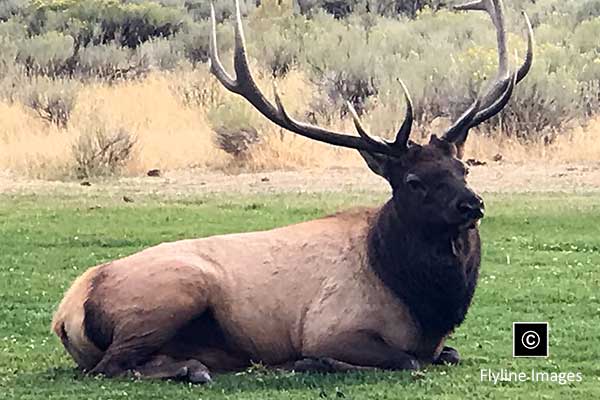 Yellowstone Wildlife
Yellowstone Wildlife
You are going to love our Yellowstone wildlife collection. We have worked hard to build one of the best Yellowstone collections you will find anywhere. That has required frequent visits to the park. What a great job right! Our wildlife collection includes bears, buffalo, coyotes, elk, geese, marmots, moose, osprey and more.
Yellowstone National Park has one of the largest populations of Antelope in the United States. These unique four legged creatures are known to be the fastest animals in north America. Getting photos of Antelope can be really challenging. They tend to gather in small herds in Yellowstone. Most of the herds we have seen have been further away from roads and people. Seems like Antelope like their privacy and feel more secure when they are in areas less frequented by humans. Yellowstone is the one place in America though that you might encounter an Antelope walking right across a road. We have had our best luck getting images of Antelope, during trips into the Lamar Valley.
The park is a remarkable sanctuary for a wide variety of wildlife, including several species of antelope, the most notable being the pronghorn. Pronghorns are native to North America and are renowned for their incredible speed, being the fastest land mammal in the Western Hemisphere. These graceful animals thrive in the vast open landscapes of Yellowstone, primarily in the park’s grasslands and sagebrush steppes. They have distinctive white and tan coats, and males are recognizable by their prominent, forked horns. Pronghorns are not only a symbol of the American West’s wild spirit but also play a vital role in Yellowstone’s ecosystem, serving as prey for predators like wolves and contributing to the health of vegetative communities through their grazing.
Pronghorns are not the only iconic species that call Yellowstone home. The park is also home to the largest concentration of free-ranging bison in the world. These majestic creatures once roamed the Great Plains in massive herds, but their numbers were drastically reduced due to hunting and habitat loss. Thanks to conservation efforts, bison populations have rebounded in Yellowstone, with over 4,000 bison now roaming the park. These iconic animals are not only a symbol of the American West but also play an essential role in maintaining Yellowstone’s grasslands and prairies through their grazing habits.
Black bears, with their impressive adaptability and varied diet, are a common sight in Yellowstone National Park. These resilient creatures thrive in the park’s diverse ecosystems, ranging from dense forests to open meadows, which provide ample food sources such as berries, nuts, insects, and occasionally small mammals. Yellowstone’s vast expanse, coupled with its conservation efforts, creates a sanctuary for these bears, allowing their population to flourish. The park’s commitment to protecting natural habitats ensures that black bears, along with other wildlife, enjoy a safe environment where they can continue to thrive.
Black bears are also known for their intelligence and problem-solving abilities. They have been observed using various tools, such as rocks and sticks, to access food sources or construct dens. This adaptability not only allows them to survive in different environments but also contributes to their overall success as a species. Despite their name, black bears can actually come in a variety of colors, including brown, cinnamon, and even white in some rare cases. These variations in color are a result of genetic mutations and do not affect the bear’s ability to survive in its environment.
In addition to their behavioral adaptations, black bears also have physical adaptations that aid in their survival. Their strong jaws and sharp claws make them efficient hunters, while their thick fur provides insulation during the cold winter months. They also have a keen sense of smell, allowing them to detect food and potential threats from a distance.
The highest concentration of black bear populations in Yellowstone National Park is found in the park’s Northern Range. This region offers a varied habitat that is ideal for black bears, including dense forests and ample food sources such as whitebark pine nuts, army cutworm moths, and various plant materials. The Northern Range also experiences fewer human interactions compared to other areas in the park, allowing black bears to thrive without disturbance.
The abundance of black bears in the Northern Range also plays an important role in maintaining a healthy ecosystem. As opportunistic omnivores, black bears play a crucial role in controlling populations of prey species such as elk and bison. By regulating these populations, black bears help prevent overgrazing and maintain a balance in the park’s ecosystem.
We have one of the best stock photo collections of North American Buffalo that you will find anywhere. Each image you purchase comes with a royalty free license. The bison images we offer were taken in Yellowstone National Park. Many of the images in our Bison collection were taken in the Lamar Valley, others were taken during trips into the Hayden Valley. Buffalo roam freely throughout the park. A few of the photos in our collection were taken at higher altitudes in the park, near places like Mount Washburn.
The Yellowstone National Park Bison Herd is one of the few remaining large herds of American bison in the United States. These majestic animals roam the vast landscapes of Yellowstone, embodying the spirit and resilience of the American West. This herd is significant not only for its size but also for its genetic purity, as many bison herds have been crossbred with cattle. Today, the Yellowstone bison serve as a potent symbol of conservation and the efforts to preserve America’s wildlife heritage, drawing visitors from around the world to witness their grandeur in the park’s sprawling meadows and valleys.
The history of the Yellowstone bison herd dates back to the early 1900s when they faced severe threats from hunting and habitat loss. At one point, their population dwindled to less than two dozen individuals due to overhunting and competition with domestic livestock for grazing land. However, thanks to dedicated conservation efforts, the herd has made a remarkable recovery and now stands at over 4,000 individuals.
Despite their resurgence, the Yellowstone bison herd still faces ongoing challenges. The biggest threat to the herd is the potential spread of brucellosis, a bacterial infection that can cause miscarriages in cattle. As a result, some ranchers and state officials have called for culling the bison population to prevent the disease from spreading to their livestock. However, this has sparked controversy and debate over the best approach to managing the bison herd and balancing conservation with the needs of local communities.
In recent years, efforts have been made to find alternative solutions to controlling brucellosis in Yellowstone’s bison population, such as vaccinating the animals and implementing stricter management practices. These efforts have shown promise in reducing the risk of disease transmission while also allowing the bison herd to continue thriving.
Beyond their ecological importance, the Yellowstone bison herd holds cultural significance for Native American tribes who have long revered and relied on these animals. Many tribes view the bison as sacred and consider them an integral part of their cultural identity. In recognition of this, there have been efforts to involve Native American tribes in the management and conservation of the Yellowstone bison herd, further highlighting the importance of this iconic species.
The grizzly bear, a symbol of wilderness and resilience, plays a pivotal role in the ecosystem of Yellowstone National Park. Known scientifically as Ursus arctos horribilis, the Yellowstone grizzly bears are a subspecies of the brown bear and have captured the imagination and intrigue of visitors and researchers alike. Once facing the brink of extinction in the Lower 48 states, concerted conservation efforts have led to a significant rebound in their populations within the park. These majestic creatures are apex predators, playing a crucial role in maintaining the health and balance of the ecosystem by controlling populations of other species and facilitating nutrient distribution.
In addition to being essential for the ecosystem, grizzly bears also hold cultural and spiritual significance for many Native American tribes. They are often seen as guardians of nature and are revered for their strength and resilience in the face of adversity. Grizzly bears can grow up to 8 feet tall and weigh over 800 pounds, making them one of the largest land-dwelling carnivores in North America. Despite their imposing size, they are primarily herbivorous and feed on a variety of plants and berries, as well as insects, fish, and small mammals. Their diet varies depending on the season and availability of food sources, with fall being the most crucial time for them to consume enough calories to prepare for hibernation.
Yellowstone National Park provides an ideal habitat for grizzly bears, with its diverse landscape of forests, rivers, and meadows. The park also has strict regulations in place to protect the bears and their habitats, including designated bear management zones where human activities are limited. Visitors are urged to follow safety protocols and guidelines to reduce potential negative interactions with these wild animals.
While the Yellowstone grizzly bear population has rebounded in recent decades, they are still facing several threats to their survival. The loss of natural habitat due to human activities and climate change, as well as conflicts with humans over resources, continue to pose significant challenges for the long-term conservation of these animals.
Grizzly bears are an integral part of the ecosystem in Yellowstone National Park and hold both environmental and cultural importance. As stewards of this land, it is crucial for us to continue protecting and preserving these magnificent creatures for future generations to come. Through responsible tourism and continued conservation efforts, we can ensure the survival of the Yellowstone grizzly bear and maintain the delicate balance of this unique ecosystem. Let us appreciate and respect these powerful animals, who remind us of the beauty and resilience of the natural world.
Getting great photos of Elk in Yellowstone can be challenging, depending on the time of year you visit the park. The Elk in Yellowstone roam freely through the entire park. Many of the best photos that we have been able to get have come during trips near Lake Yellowstone, Grant Village and the Upper Geyser basin. We have also had great success in finding some gorgeous Elk herds in Mammoth Springs and in the area between Mammoth and the Roosevelt Tower District.
To maximize your chances of capturing these majestic creatures on camera, it’s advisable to plan your visit during the early morning or late afternoon hours. Elk are most active during these times, especially in the cooler months of spring and fall, when the males showcase their impressive antlers. Quietly positioning yourself near water sources or grassy meadows can also increase your likelihood of encountering them. Always remember to respect the wildlife by maintaining a safe distance and using a good quality zoom lens to get those breathtaking shots without disturbing their natural behavior.
Some other helpful tips for photographing elk include scouting the area beforehand to identify potential shooting locations and lighting conditions. This can also help you plan your equipment and camera settings accordingly. It’s also important to consider the weather, as heavy rain or snow may make it more difficult to capture clear shots.
In addition to capturing still images, video footage can also be a great way to showcase the elk’s behavior and habitat. Consider setting up a tripod or stabilizer for steady shots, and experiment with different angles and perspectives to add visual interest to your footage.
Another key aspect of wildlife photography is patience. Elk can be elusive creatures, so it may take some time and perseverance to capture the perfect shot. Use this time to observe their behavior and movements, and be prepared to adapt your shooting strategy accordingly.
When photographing elk, it’s important to also be mindful of the environment and their natural habitat. Avoid disturbing the animals or damaging any plants or surroundings in pursuit of a photograph. Remember to always follow Leave No Trace principles and respect the wildlife’s space.
Given the insights from Yellowstone park rangers, it’s clear that those hoping to capture photographs of moose may find their quest challenging within the boundaries of Yellowstone National Park. The rangers’ unanimous advice to head towards Grand Teton National Park is invaluable for photographers aiming to add majestic moose shots to their portfolio. Grand Teton’s terrain, consisting of lush valleys and water-rich environments, provides an ideal habitat for moose, contrasting with Yellowstone’s less hospitable moose terrain. This move from Yellowstone to Grand Teton not only increases the chances of encountering these magnificent animals but also offers photographers the opportunity to explore and capture the raw beauty of another iconic national park.
Not only will photographers have a higher chance of capturing stunning shots of moose in Grand Teton National Park, but they also have the opportunity to photograph other diverse wildlife such as bison, elk, and grizzly bears. The park’s diverse landscape also offers breathtaking views of the Teton mountain range, making it a popular destination for landscape photography.
In addition to wildlife and landscape photography, Grand Teton National Park also offers numerous opportunities for outdoor activities such as hiking, camping, and fishing. This makes it an ideal location for photographers looking to capture dynamic shots of people interacting with the natural environment.
Furthermore, Grand Teton National Park is home to several historic sites and buildings, providing a unique backdrop for architectural photography. The park’s rich history and culture can be captured through photographs of the iconic Jackson Lake Lodge or the historic Cunningham Cabin.
For photographers seeking a diverse range of subject matter, Grand Teton National Park offers endless possibilities. From wildlife and landscapes to outdoor activities and historic landmarks, this park truly has something for every photographer.
As with any national park, it’s important for photographers to follow ethical guidelines when capturing photos. This includes respecting the natural environment and wildlife, as well as adhering to park rules and regulations. By following these guidelines, photographers can help preserve the beauty of Grand Teton National Park for future generations to enjoy.
While Yellowstone may be known for its abundant wildlife, photographers looking to capture stunning shots of moose should head towards Grand Teton National Park. Not only does this increase the chances of encountering these majestic animals, but it also offers a diverse range of subject matter for photographers to capture. With its stunning landscapes, diverse wildlife, and rich history, Grand Teton National Park is a must-visit destination for any photographer looking to capture the beauty of nature through their lens. So grab your camera and head towards Grand Teton National Park for an unforgettable photography experience. So, pack your bags and head out to Grand Teton National Park for a one-of-a-kind photography adventure!
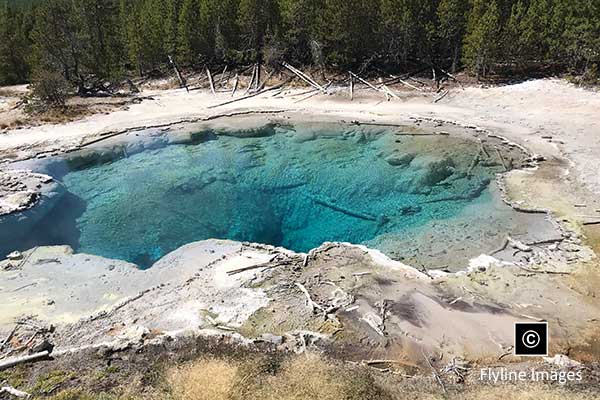 Geysers & Geo-Thermal Features
Geysers & Geo-Thermal Features
Yellowstone National Park is renowned for its remarkable geysers and geothermal features, which are among the most striking and extensive on the planet. The park sits atop a vast volcanic hot spot, resulting in over 10,000 hydrothermal features, including more than 500 geysers. Old Faithful, arguably the park’s most famous geyser, is celebrated for its predictability, erupting every 90 minutes or so. Beyond geysers, Yellowstone’s thermal features include vibrant hot springs, such as the Grand Prismatic Spring known for its striking colors ranging from blue to orange, mudpots, and fumaroles. These features are not only a testament to Earth’s volcanic activity but also create ecosystems where unique microbial life flourishes, drawing scientists and visitors alike from around the globe.
In addition to its noteworthy geothermal features, Yellowstone National Park also boasts a diverse array of flora and fauna. The park is home to hundreds of animal species, including grizzly bears, wolves, bison, and elk. Its rugged landscape provides the perfect habitat for these creatures to thrive in their natural environment.
Yellowstone’s rich history dates back over 11,000 years when Native American tribes first inhabited the area. In 1872, Yellowstone became the world’s first national park, set aside to be preserved and protected for future generations. Its vast expanse of over 3,000 square miles encompasses not only geothermal wonders and diverse wildlife but also breathtaking canyons, alpine rivers, and majestic peaks.
Visitors to Yellowstone can explore the park through a variety of activities, including hiking, camping, and wildlife watching. The park also offers educational programs and ranger-led tours to help visitors better understand and appreciate its natural wonders.
While Yellowstone National Park is undoubtedly a top destination for nature lovers, it also faces challenges in preserving its unique ecosystem. Climate change, invasive species, and human impact all pose threats to the park’s delicate balance. As such, it is crucial for visitors to practice responsible tourism and follow guidelines set by the National Park Service to minimize their impact on this precious natural resource.
Yellowstone National Park is a true gem of North America, offering visitors a chance to witness and learn about Earth’s geological processes, marvel at its diverse flora and fauna, and appreciate the importance of conservation and preservation. Whether it’s your first visit or your hundredth, Yellowstone is sure to leave a lasting impression on all who have the privilege of experiencing its wonders. So plan your trip and prepare to be amazed by this extraordinary national treasure. The park’s grandeur and uniqueness make it an unforgettable destination for individuals, families, and nature enthusiasts alike. So pack your bags and get ready to explore all that Yellowstone National Park has to offer! From the mesmerizing geysers to the peaceful hiking trails, there is no shortage of adventure and wonder in this remarkable national park.
TYPES OF GEOTHERMAL FEATURES
Fumaroles, often referred to as steam vents, are a captivating geological feature found in Yellowstone National Park. These natural phenomena occur when groundwater is heated by the park’s volcanic activity, turning into steam and escaping through cracks in the earth’s surface. Fumaroles are indicative of the intense geothermal activity beneath Yellowstone, showcasing the park’s dynamic and evolving landscape. Visitors to Yellowstone can witness the power of the Earth’s internal heat and the beauty of its expression on the surface, making fumaroles a must-see feature for those seeking to understand the natural forces that shape our planet.
In addition to their geological significance, fumaroles also play a vital role in the park’s ecosystem. The high temperatures and chemical-rich steam released by these vents provide unique habitats for various microorganisms, including thermophiles – organisms that thrive in extreme heat. These microorganisms can be found living around and inside fumaroles, creating colorful and otherworldly microbial mats. These mats not only add to the visual appeal of fumaroles but also contribute to the park’s biodiversity, supporting a diverse array of plants and animals that are dependent on these unique habitats.
Geysers and fumaroles are both natural phenomena associated with volcanic activity, but they differ significantly in their mechanisms and appearances. Geysers are hot springs that periodically erupt, spewing hot water and steam into the air. This spectacular activity occurs when underground water is heated by magma and becomes trapped in cavities below the surface, building up pressure until it forcefully ejects through the geyser’s surface vent. In contrast, fumaroles are openings or vents in the Earth’s crust that emit steam and gases, such as carbon dioxide and sulfur dioxide, but no liquid water. Unlike geysers, which go through a cycle of eruption, fumaroles continuously release gas and steam without the dramatic eruptions. The main difference between them lies in the presence of liquid water in geysers’ eruptions and the predominantly gaseous emissions from fumaroles.
Geysers and fumaroles can be found in various locations around the world, but they are most commonly associated with volcanic regions and geothermal areas. Yellowstone National Park in the United States is famous for its numerous geysers, including Old Faithful, which erupts regularly at predictable intervals. Meanwhile, the fumaroles of Italy’s dormant volcano Mount Vesuvius have been continuously emitting steam and gases for centuries.
While both geysers and fumaroles are closely linked to volcanic activity, they can also be found in non-volcanic areas. For example, some geysers in Iceland are powered by the Earth’s heat without any direct connection to magma chambers. Similarly, fumaroles can also occur near hot springs, which are formed by geothermally heated groundwater.
Apart from being natural wonders, geysers and fumaroles also play significant roles in the Earth’s ecosystems. The mineral-rich water and gases released by these phenomena nourish unique microorganisms that thrive in extreme environments, providing a source of energy for other organisms in the surrounding areas. In addition, geysers and fumaroles also have cultural significance for many indigenous communities, who consider them sacred sites and incorporate them into their traditions and beliefs.
Geothermal steam vents, also known as steam fumaroles, are openings in the Earth’s crust from which steam and volcanic gases are released. They differ from fumaroles, which primarily emit gases and occasionally steam, by consistently expelling steam as their main output. On the other hand, geysers are a special type of geothermal feature characterized by the intermittent ejection of water and steam into the air. This spectacle is caused by the heating of groundwater to boiling point, resulting in the explosive release of the water and steam mixture. Thus, while geysers and steam vents both involve steam, geysers uniquely combine water and steam in a dramatic, eruptive process, distinguishing them from the steady release seen in steam vents.
Geothermal steam vents, fumaroles, and geysers are all fascinating natural features that can be found in various parts of the world. They are often associated with volcanic activity and can be found near active or dormant volcanoes. However, these features can also be found in non-volcanic areas where there is a significant amount of underground heat. Some examples of notable geothermal steam vents and geysers include the Old Faithful Geyser in Yellowstone National Park, the Valley of Geysers in Kamchatka, Russia, and the El Tatio geyser field in Chile.
One interesting aspect of geothermal steam vents and geysers is their connection to renewable energy. The Earth’s heat can be harnessed and used to generate electricity, providing a sustainable and environmentally-friendly source of energy. This is especially important in today’s world, where there is a growing concern about the impact of fossil fuels on the environment. Geothermal power plants use steam from geothermal features to turn turbines and produce electricity, making use of this natural resource in an efficient way. Some countries, such as Iceland, rely heavily on geothermal energy for their electricity needs.
Aside from their practical uses, geothermal steam vents and geysers also hold cultural significance. They have been revered by indigenous cultures and used for healing purposes. The Maori people of New Zealand, for example, consider the Pohutu Geyser in Rotorua a sacred site and believe that its waters have healing properties. The Wacipi, a traditional Lakota Sioux ceremony, involves the use of steam from geothermal vents in sweat lodges for physical and spiritual purification.
Mud pots in Yellowstone National Park present a unique geothermal spectacle, differentiating themselves from the park’s other geothermal features such as geysers and hot springs through their intriguing and somewhat less scenic appearance. These bubbling pools of mud are formed where hot water is limited and hydrogen sulfide gas interacts with water and soil to form sulfuric acid. This acid breaks down rock into clay, creating the mud. Unlike the striking colors of the prismatic springs or the dramatic eruptions of geysers, mud pots offer a more subtle, albeit mesmerizing, display of Earth’s internal processes at work. Their viscosity and activity can change with the seasons and rainfall, providing a constantly evolving natural attraction.
Mud pots can be found in various shapes and sizes, ranging from small puddles to large pools. Some are constantly active, while others may go through periods of inactivity. The consistency of the mud can also vary, from thick paste-like mud to more liquid slurry. This diversity adds to the charm of these geothermal features, as visitors never know what they may encounter when they come across a mud pot.
In addition to their unique appearance and behavior, mud pots also play an important role in the ecosystem of Yellowstone National Park. The acidic nature of the mud can inhibit plant growth, creating barren areas around the mud pots. However, this allows for specialized microorganisms to thrive, providing a food source for many animals such as birds and insects. The mud pots also contribute to the overall geothermal activity in the park, which supports a diverse range of flora and fauna.
Hot springs, fumaroles, and geysers are all manifestations of geothermal activity, but they differ significantly in their specific characteristics and how they interact with the surrounding environment. Hot springs are pools of water heated by the earth’s internal heat, creating relaxing and therapeutic natural baths that can be found in many parts of the world. The warmth of the water is primarily due to the heat from the earth’s interior warming groundwater.
Fumaroles differ from hot springs in that they are vents in the earth’s crust that emit steam and gases, such as carbon dioxide and sulfur dioxide, rather than hot water. These are often found in areas with volcanic activity where magma heats groundwater to the point of vaporization, and the gas escapes through cracks in the surface.
Geysers are a more dynamic phenomenon, functioning as natural hot water fountains. They episodically erupt, shooting hot water and steam into the air. This occurs when underground chambers filled with water become heated. The water boils, and the resulting steam expands, forcing the water above it to erupt to the surface. Geysers are much rarer than hot springs and require a specific set of geological conditions to form, including an abundant supply of groundwater, a heat source, and a unique underground water reservoir system that allows the water to become superheated.


